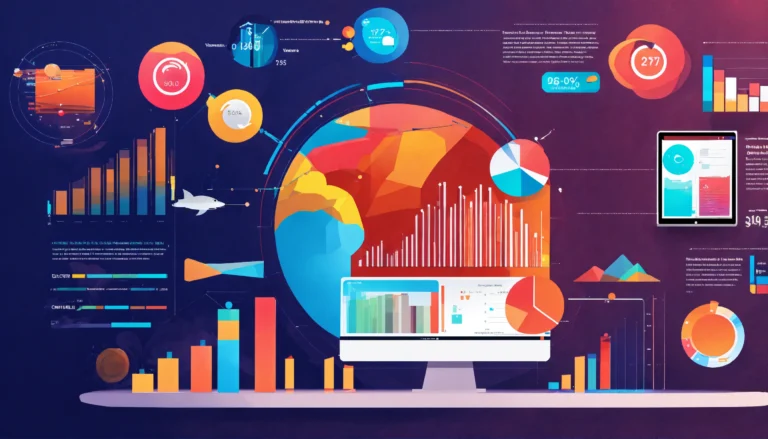With the ever-evolving landscape of data and consumer preferences, effectively harnessing sentiment and trend analysis is important for your decision-making processes. By understanding the emotional tone of public discourse and identifying emerging patterns, you can gain valuable insights that enhance your strategic planning. This knowledge empowers you to adapt to market demands, build stronger customer relationships, and make informed choices that align with your organization’s goals. Dive deeper into how these analytical tools can transform your approach to decision-making and elevate your business success.
Understanding Sentiment Analysis
Before delving into decision-making processes, it’s crucial to grasp the concept of sentiment analysis. This technique involves evaluating emotions expressed in text data to derive insights about public opinion, customer satisfaction, or market trends. Understanding sentiment analysis enables you to better interpret feedback and make informed choices based on the emotional tone of your audience.
Definition and Importance
At its core, sentiment analysis is the computational study of opinions, sentiments, and emotions in texts. It allows you to assess and quantify subjective information, making it vital for businesses and analysts. By recognizing the underlying sentiments, you can shape your strategies more effectively and respond to your audience’s needs.
Techniques Used in Sentiment Analysis
Any effective sentiment analysis relies on various techniques, such as natural language processing (NLP), machine learning, and lexicon-based methods. These approaches enable you to process and analyze textual information to identify sentiments accurately.
Due to the complexity of human language, leveraging a combination of techniques enhances the quality of sentiment analysis. NLP algorithms, for instance, help break down text into comprehendible components, while machine learning models can identify patterns in sentiments over time. Lexicon-based methods use predefined lists of words and phrases associated with positive or negative sentiments, allowing you to analyze texts at scale. By implementing these techniques, you can gain deeper insights into your audience’s emotions and refine your decision-making process accordingly.
The Role of Trend Analysis
It is necessary to recognize that trend analysis empowers you to make informed decisions by revealing patterns in data over time. By observing changes and movements in various metrics, you can better understand market dynamics, consumer behavior, and potential future developments, all of which are vital for strategic planning and responsiveness.
Identifying Patterns and Trends
One of the primary benefits of trend analysis is its ability to help you identify patterns that may not be apparent at first glance. By systematically analyzing historical data, you can uncover consistent behaviors and shifts that inform your decision-making process, allowing you to anticipate changes and respond effectively.
Tools for Effective Trend Analysis
To conduct trend analysis effectively, you can utilize various tools and technologies designed to streamline the process. From data visualization software that enables you to generate trends through graphs and charts, to advanced analytics platforms that leverage machine learning algorithms, the right tools can enhance your insight generation and speed up your decision-making.
Trends can be captured through multiple software solutions that combine historical data mining, real-time analytics, and predictive modeling. By selecting tools that best suit your data environment, you can analyze large datasets more efficiently and effectively. Options like Tableau for visualization, Google Analytics for web trends, and social media monitoring tools for sentiment tracking provide you with a comprehensive view of the landscape, facilitating timely and intelligent decision-making processes.
The Intersection of Sentiment and Trend Analysis
Some experts argue that understanding the intersection of sentiment and trend analysis is fundamental to improving your decision-making processes. Sentiment analysis provides insight into the emotions and opinions of your target audience, while trend analysis captures the broader movements within the market or industry. By integrating these two dimensions, you can unearth deeper insights that drive both strategy and innovation.
Correlation Between Sentiment and Trends
One key aspect to consider is how sentiment often reflects or anticipates trends in the market. When positive sentiments are detected around a product or service, it can signal a rising trend that you should capitalize on. Conversely, negative sentiments can serve as early warning signs for potential declines, enabling you to pivot swiftly.
Case Studies Illustrating the Connection
Correlation between sentiment and trend analysis can be further explored through these impactful case studies:
- Case Study 1: A leading beverage company analyzed social media sentiment leading up to a product launch and noticed a 40% increase in positive mentions correlating with a 25% surge in sales.
- Case Study 2: An e-commerce platform identified a decline in customer reviews sentiment that preceded a 35% drop in product demand during the holiday season.
- Case Study 3: A tech firm used sentiment analysis to gauge excitement around a new gadget, allowing them to adjust their marketing strategy which resulted in a 30% increase in pre-orders.
Due to the actionable insights gained from these case studies, you can see that sentiment analysis offers predictive power regarding trends. Monitoring public sentiment allows you to anticipate market shifts, tailor your strategies accordingly, and ultimately make more informed decisions. These examples underscore the importance of leveraging sentiment alongside trends for better control over your business outcomes.
Applications in Decision-Making
All organizations can benefit from sentiment and trend analysis to enhance their decision-making processes. By utilizing these analytical techniques, you can uncover valuable insights about customer preferences, market dynamics, and emerging trends. This empowers you to make informed choices and adapt strategies effectively, ensuring that your organization remains competitive and aligned with evolving demands.
Business Strategy Development
An effective business strategy relies on understanding your market landscape and audience sentiment. By employing sentiment analysis, you can gather feedback from customers and stakeholders, allowing you to identify strengths and weaknesses in your current approach. This information enables you to refine your strategic initiatives, prioritize areas for innovation, and align your goals with customer expectations.
Risk Management and Forecasting
Management of risk can significantly improve when you incorporate sentiment and trend analysis into your forecasting models. By analyzing public sentiment and trending topics, you can better predict market fluctuations and potential challenges. This allows you to proactively develop contingency plans, ensuring that your organization can navigate uncertainties effectively and maintain stability in changing environments.
A robust risk management strategy involves continuous monitoring of sentiment and trends that may impact your industry. By staying attuned to shifts in public opinion and emerging patterns, you gain a more comprehensive view of potential threats and opportunities. This enables you to make timely adjustments to your operations and strategies, safeguarding your organization against unforeseen disruptions and enhancing your overall resilience.

Challenges in Implementing Analysis
After recognizing the importance of sentiment and trend analysis, you may encounter various challenges during implementation. The complexities of data aggregation, processing, and interpretation can hinder your efforts to derive actionable insights. Additionally, the rapidly changing landscape of consumer opinions and market trends adds an extra layer of difficulty, making it necessary for you to remain agile and adaptable in your approach.
Data Quality and Accuracy
With the effectiveness of sentiment and trend analysis hinged on the quality of the data you use, ensuring accuracy is paramount. Inconsistent or biased datasets can skew your results, leading to misguided decisions. It is your responsibility to invest in reliable data sources and robust methodologies to maintain the integrity of your analysis.
Interpreting Results Effectively
Above all, the ability to interpret results effectively is vital for making informed decisions. Your analysis could provide insightful metrics, yet without a proper understanding of what they mean, your decision-making will be compromised. Developing the expertise to translate complex data into actionable insights is necessary for maximizing the value of your analysis.
This skill in interpretation not only involves understanding statistical significance but also recognizing the context behind the numbers. You need to ask critical questions and consider various factors affecting the data. By fostering a deeper familiarity with your industry and keeping up with relevant trends, you can enhance your capability to engage with the results meaningfully, ultimately leading to smarter and more effective decision-making.
Future of Sentiment and Trend Analysis
Once again, the landscape of sentiment and trend analysis is set to evolve rapidly, driven by advancements in technology and data processing capabilities. As you embrace these innovations, you’ll find that understanding consumer sentiment and tracking trends will become more intuitive and accessible. The future holds promise for enhanced analytics tools that will empower you to make well-informed decisions swiftly, refining your strategies and optimizing outcomes across various sectors.
Emerging Technologies and Innovations
Behind the scenes, cutting-edge technologies such as artificial intelligence and machine learning are transforming how sentiment and trend analysis is conducted. By leveraging these tools, you can uncover deeper insights and patterns within vast amounts of data, making it easier to gauge public sentiment and identify emerging trends. This allows you to respond proactively rather than reactively, positioning your organization ahead of the competition.
Evolving Best Practices
To maximize the effectiveness of sentiment and trend analysis, you need to continually adapt and refine your methodologies. Best practices are evolving alongside technological advancements, and staying updated with these changes is crucial for achieving optimal results. You should focus on integrating data from diverse sources, refining your analytical frameworks, and fostering a culture of collaboration within your team. By doing so, you enhance your decision-making capability and ensure your strategies remain relevant and impactful.
And, as you consistently implement these evolving best practices, engaging with your data more dynamically will emerge as a fundamental competency. You’ll find it beneficial to involve multidisciplinary teams in your analysis to ensure diverse perspectives are considered. Seeking feedback and iterating on techniques will empower you to harness the full potential of sentiment and trend analysis. Thus, creating a streamlined, agile approach will lead to improved decision-making processes and better outcomes for your organization.
To wrap up
Upon reflecting, it becomes clear that sentiment and trend analysis are fundamental tools for enhancing your decision-making capabilities. By understanding public sentiment and observing patterns in data, you can navigate complex landscapes more effectively and make informed choices that align with your goals. These insights not only enhance your strategic planning but also foster a proactive approach to potential challenges, thereby giving you a substantial edge in your personal and professional endeavors.




